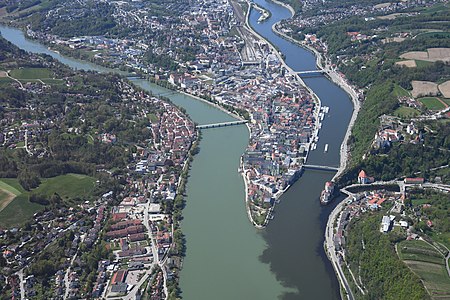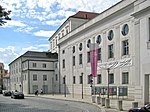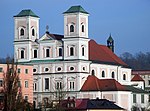Passau
Lower BavariaPages including recorded pronunciationsPages with German IPAPassauPopulated places on the Danube ... and 4 more
Populated places on the Inn (river)Roman fortifications in RaetiaTowns in BavariaUrban districts of Bavaria

Passau (German: [ˈpasaʊ] ; Central Bavarian: Båssa) is a city in Lower Bavaria, Germany, also known as the Dreiflüssestadt ("City of Three Rivers") as the river Danube is joined by the Inn from the south and the Ilz from the north. Passau's population is approx. 50,000, of whom about 12,000 are students at the University of Passau, renowned in Germany for its institutes of economics, law, theology, computer science and cultural studies.
Excerpt from the Wikipedia article Passau (License: CC BY-SA 3.0, Authors, Images).Passau
Domplatz,
Geographical coordinates (GPS) Address Nearby Places Show on map
Geographical coordinates (GPS)
| Latitude | Longitude |
|---|---|
| N 48.574444444444 ° | E 13.464722222222 ° |
Address
Domplatz 1
94032 , Altstadt
Bavaria, Germany
Open on Google Maps










